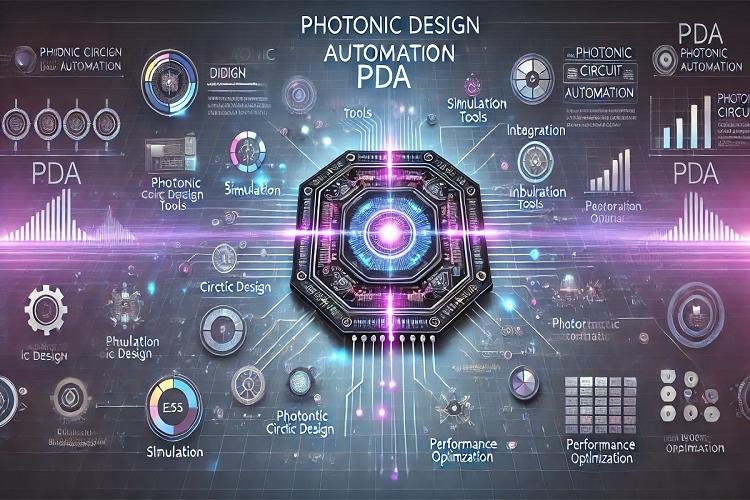According to the new research report on ” Photonic Design Automation Market Forecast to 2030 – Global and Regional Share, Trend, and Growth Opportunity Analysis – by Component, Deployment, Organization Size, and Application,” published by The Insight Partners, the market was valued at US$ 1.39 billion in 2022 and is expected to reach US$ 3.90 billion by 2030; it is estimated to record a CAGR of 13.8% from 2022 to 2030.
Learn More and Download the PDF Sample Copy Here: https://www.theinsightpartners.com/sample/TIPRE00033004/?utm_source=OpenPR&utm_medium=10196
The photonic design automation market in Asia Pacific is segmented into Japan, China, South Korea, Taiwan, and the Rest of Asia Pacific. Asia Pacific holds a significant photonic design automation market share, characterized by its rapid technological advancements. With a strong emphasis on innovation and a thriving semiconductor industry, the region has become a hub for cutting-edge photonics technologies. One of the major factors driving the Asia Pacific photonic design automation market is the region’s dominance in the semiconductor industry. Countries in APAC, such as China, South Korea, and Taiwan, have emerged as a global leader in semiconductor manufacturing and chip design in the photonic design automation market. This dominance in the semiconductor supply chain provides a strong foundation for the development and adoption of photonic design automation technologies.
Various industries, including telecommunications, healthcare, consumer electronics, and automotive, drive the Asia Pacific photonic design automation market growth. The increasing adoption of technologies for designing cutting-edge photonics in these sectors fuels the growth of the photonic design automation market in the region. Furthermore, government initiatives and policies are crucial in promoting the development and adoption of photonic design automation technologies in Asia Pacific. Governments in countries such as Japan, China, and South Korea have implemented strategic plans and funding programs to support the growth of the photonics industry. These initiatives aim to enhance research capabilities, foster collaboration between academia and industry, and create a favorable environment for innovation and entrepreneurship.
The global photonic design automation market is segmented based on component, deployment, organization size, and application. Based on component, the photonic design automation market is divided into solutions and services. In terms of deployment, the photonic design automation market is bifurcated into on-premise and cloud. By organization size, the photonic design automation market is bifurcated into SMEs and large enterprises. Based on application, the photonic design automation market is divided into academic research and industrial research & manufacturing. By geography, the photonic design automation market is segmented into North America, Europe, Asia Pacific (APAC), and Rest of the World (RoW).
Inquire For a Discount at – https://www.theinsightpartners.com/discount/TIPRE00033004/?utm_source=OpenPR&utm_medium=10196
Key Findings of Study:
The small and medium-sized enterprises (SMEs) segment of the photonic design automation market refer to the involvement of small and medium-sized companies in utilizing photonic design automation tools and technologies for their design processes. SMEs play a significant role in various industries and contribute to innovation and economic growth. SMEs in the photonic industry can benefit from design automation tools to streamline their design processes, improve efficiency, and reduce time-to-market. Photonic design automation software enables SMEs to design and simulate complex photonic components and systems, helping them stay competitive in the photonic design automation market. Photonic design automation enables SMEs to target specific photonic design automation market segments and address niche applications. By leveraging design automation tools, SMEs can develop customized photonic solutions in the photonic design automation market tailored to the needs of specific industries, such as telecommunications, healthcare, and consumer electronics. Photonic design automation empowers SMEs to develop sophisticated photonic devices and systems that meet the demands of their target photonic design automation market. By leveraging design automation tools, SMEs can explore innovative design concepts, optimize performance, and validate designs before manufacturing, reducing the risk of costly errors.
In cloud deployment, software and infrastructure required for photonic design automation are hosted and delivered over the internet by cloud service providers. In this model, customers access the photonic design automation tools and resources remotely through a web browser or dedicated software client without the need for on-premises installation or management. Cloud-based solutions offer scalability and flexibility, allowing organizations to scale up or down their computing resources based on their needs. This is particularly beneficial for photonic design automation market, which often involves computationally intensive tasks and requires significant computing power. Cloud providers typically offer robust data backup and safety measures, including data encryption, access controls, and disaster recovery options. This helps organizations protect their design files and sensitive data from loss or unauthorized access.
AIM Photonics Inc, Ansys Inc, Cadence Design Systems Inc, LioniX International BV, Luceda Photonics, Optiwave Systems Inc, Siemens AG, Synopsys Inc, SystemLab Inc, and VPlphotonics GmbH are among the prominent photonic design automation market players. Various other companies are also operating in the market and coming up with advanced technologies and offerings. Several other important photonic design automation market players were also analyzed during this market research to get a holistic view of the global market and its ecosystem. The leading photonic design automation market players focus on feature upgrades, expansion and diversification, collaboration, and acquisition strategies, which enable them to grab new business opportunities.
Browse Complete Summary and Table of Content at: https://www.theinsightpartners.com/reports/photonic-design-automation-market/
Contact Us:
If you have any queries about this report or if you would like further information, please contact us:
Contact Person: Ankit Mathur
E-mail: sales@theinsightpartners.com
Phone: +1-646-491-9876
About Us:
The Insight Partners is a one stop industry research provider of actionable intelligence. We help our clients in getting solutions to their research requirements through our syndicated and consulting research services. We specialize in industries such as Semiconductor and Electronics, Aerospace and Defense, Automotive and Transportation, Biotechnology, Healthcare IT, Manufacturing and Construction, Medical Device, Technology, Media and Telecommunications, Chemicals and Materials.
This release was published on openPR.

















